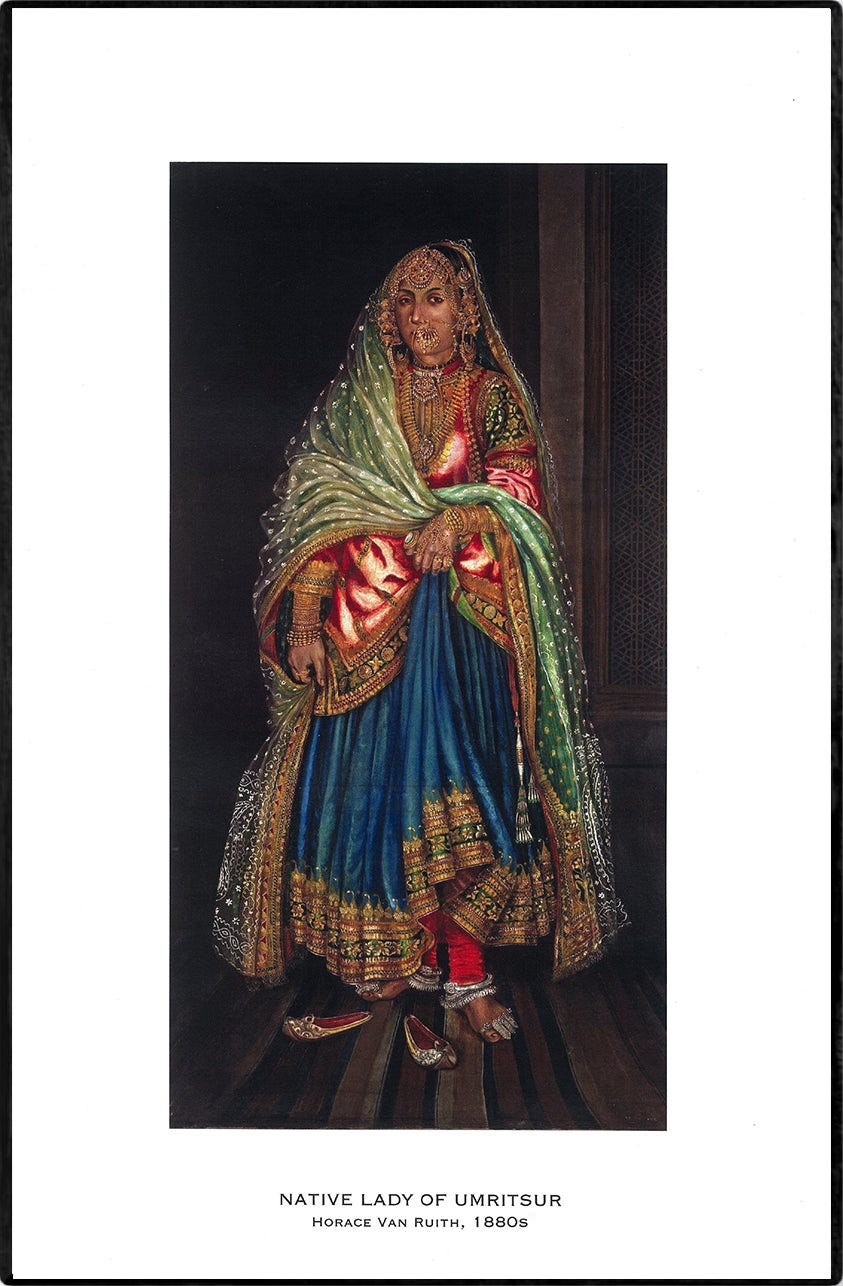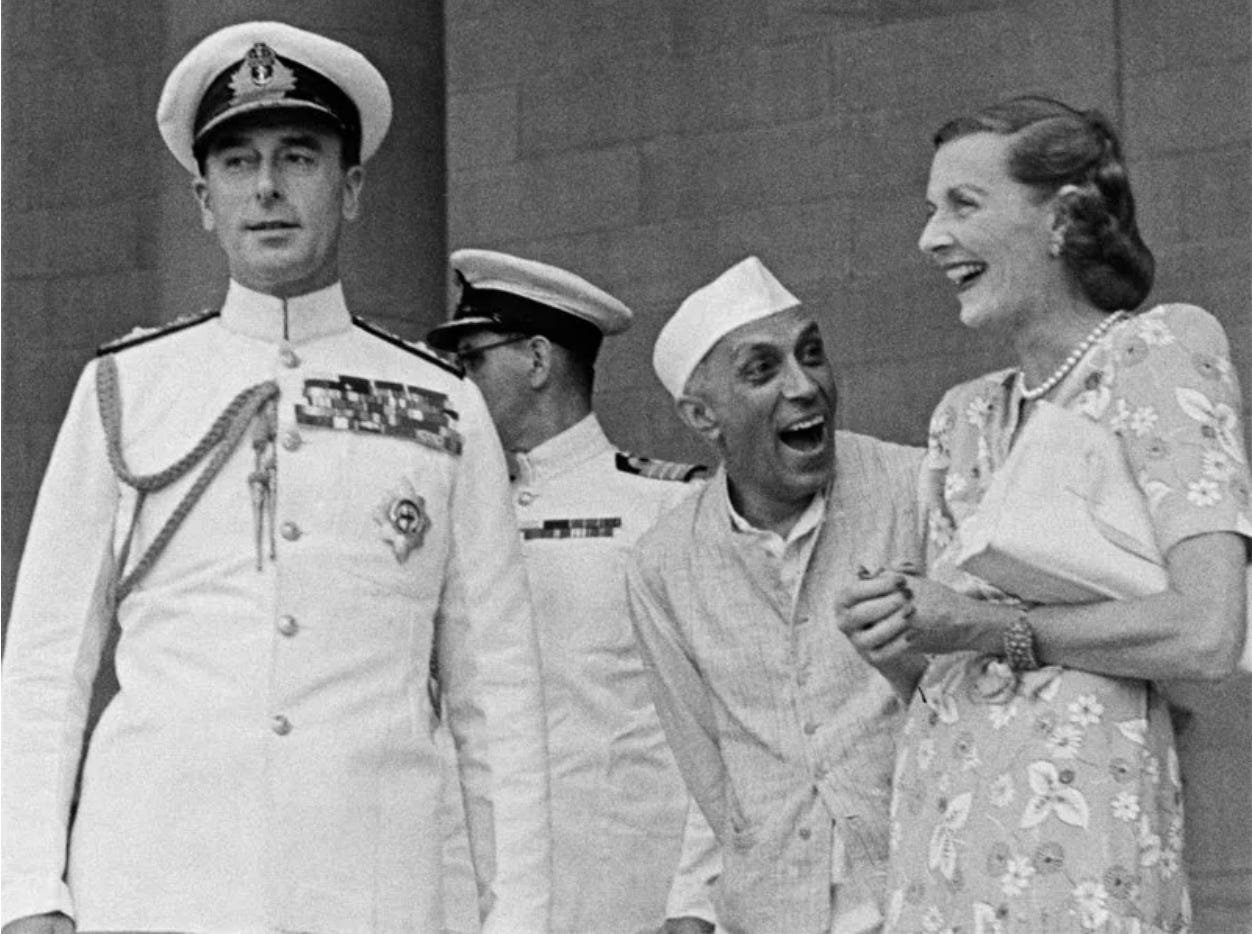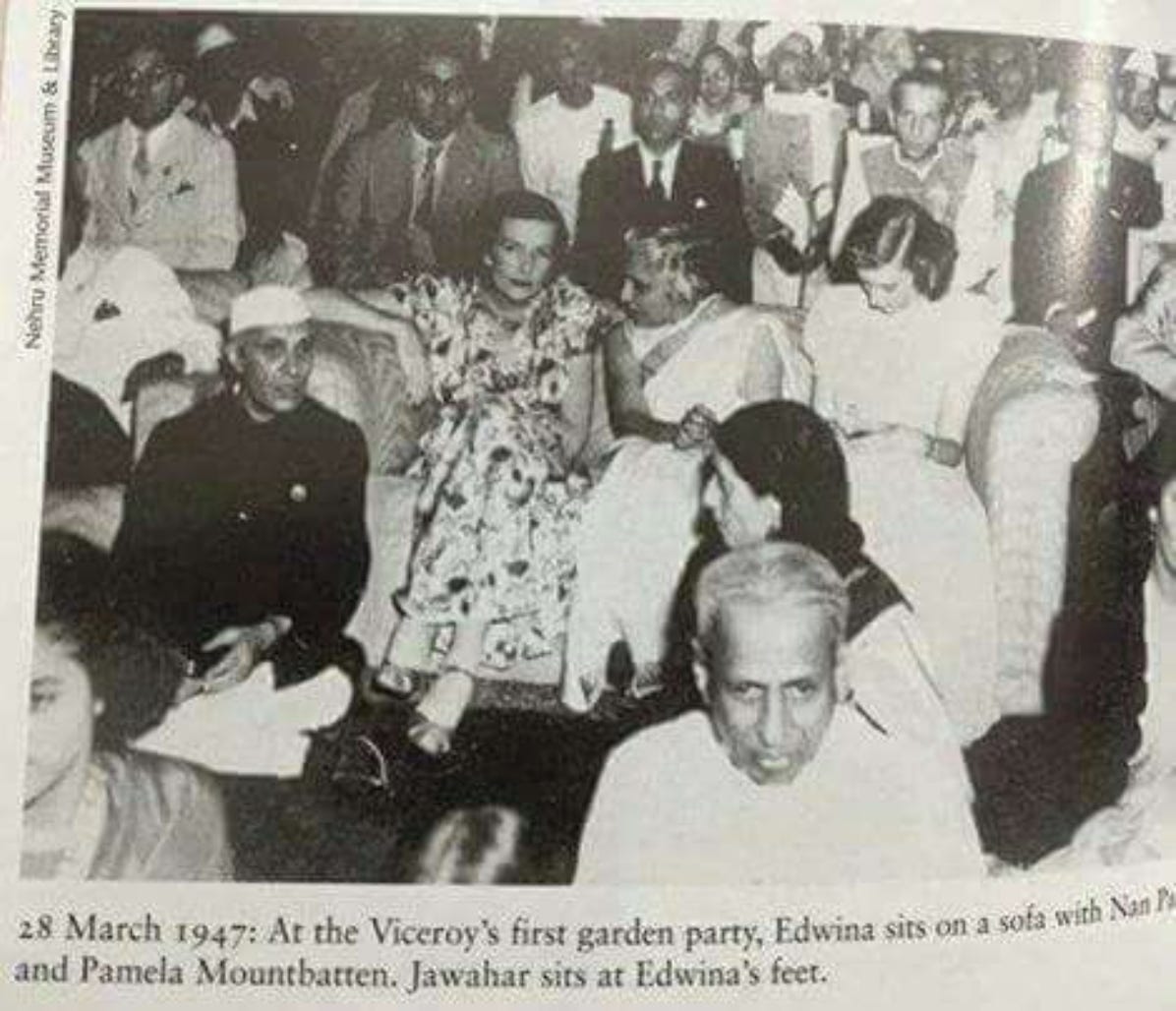Welcome to the Brown History Newsletter. If you’re enjoying this labor of love, please do consider becoming a paid subscriber. Your contribution would help pay the writers and illustrators and support this weekly publication. If you like to submit a writing piece, please send me a pitch by email at brownhistory1947@gmail.com.
Don’t forget to check out our SHOP and our Podcast.

Nehru and Edwina: An Unconventional Union

On the morning of 21st February, 1960, Edwina Mountbatten was found dead. Her assistant would later go on to describe that her cheek was cold to the touch and that beside her, lay a scattered pile of letters.
They were all from Jawaharlal Nehru.
When Louis “Dickie” and Edwina Mountbatten landed in Delhi on March 22, 1947, the conditions were bleak; India was on the brink of a civil war and the British would have to move fast. Immediately upon their arrival, the Mountbattens set out to establish relationships with the key players driving the Indian Independence movement, most notably, Jawaharlal Nehru, the then President of the National Congress, and Muhammad Ali Jinnah, the leader of the All India Muslim League. Despite their attempts, the Mountbattens did not get on well with Jinnah. They were quoted to have found him “chilly”, “reserved”, and all in all just “unpleasant”. This marked a striking difference to their relationship with Nehru, with whom they established an immediate rapport and camaraderie.
For Nehru and Edwina in particular, theirs formed an “immediate intimacy” as reported by Andrew Lownie, in his book, “The Lives and Loves of Edwina and Dickie Mountbatten”. This intimacy is further evidenced by a photograph that was captured of the two at The Mountbatten’s first garden party. On the sofa to the left is Edwina Mountbatten sitting on a sofa, seemingly in conversation with Nehru’s sister, affectionately referred to as “Nan”, to the left of Edwina, is Nehru sitting crossed legged on the ground, right by her feet. This photograph was taken on 28th March, 1947 - just a mere 6 days after their arrival in the capital.

But this isn’t just a story about two people who loved and cared about each other. They also happened to be two central figures in the storm center of one of the most important historical moments of the 20th century. All of this was, in addition to the fact that Edwina was married to the very man responsible for ushering in a new era of India and her independence.




